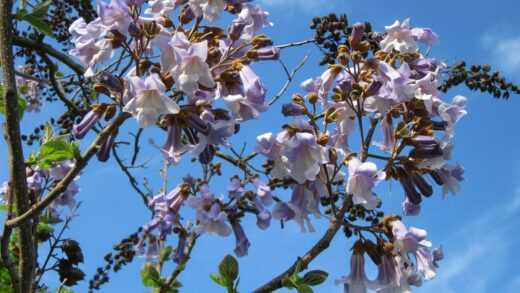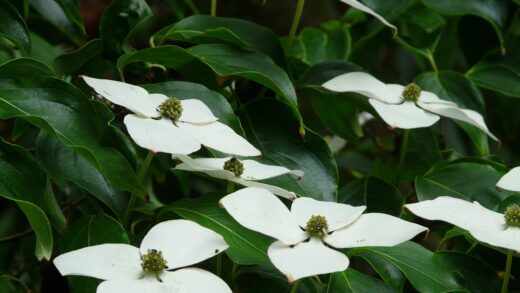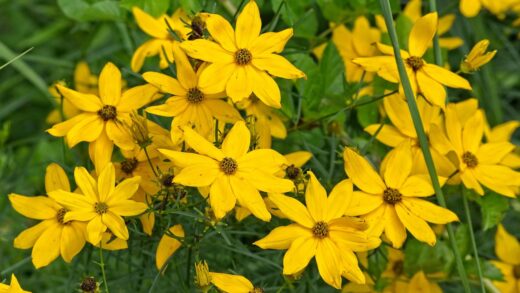Virginia creeper is a remarkably resilient and vigorous deciduous vine, celebrated for its ability to rapidly cover walls, fences, and trellises with a dense curtain of foliage. Its five-lobed leaves emerge in a fresh green hue during spring and summer, undergoing a spectacular transformation into brilliant shades of crimson, scarlet, and burgundy in the autumn. This plant is not only prized for its ornamental value but also for its ecological contributions, offering shelter and food for various wildlife. Proper care, while minimal compared to other ornamental plants, is essential to manage its aggressive growth and ensure it remains a healthy, attractive feature in the landscape rather than an unruly nuisance.
Understanding the plant’s nature
Virginia creeper is a member of the grape family, Vitaceae, which explains its vine-like growth habit and the production of small, dark blue berries. These berries, while a valuable food source for birds, are toxic to humans and pets and should not be consumed. The plant is native to eastern and central North America, a testament to its adaptability to a wide range of climates and conditions, from woodlands to urban environments. Its hardiness is one of its most significant assets, allowing it to thrive where other, more delicate climbers might fail. Understanding this inherent vigor is the first step toward successful cultivation.
The most distinctive feature of this vine is its method of climbing. It develops tendrils that are tipped with small, adhesive pads that function like suction cups. These pads secrete a calcium carbonate-based adhesive, allowing the vine to cling tenaciously to virtually any surface, including brick, stone, wood, and even smooth metal. Unlike plants like ivy, which use aerial roots that can penetrate and damage mortar, the adhesive pads of Virginia creeper generally do not harm structurally sound surfaces. However, care should be taken with older brickwork or painted surfaces, as removing the vines can pull away loose material or paint.
This vine’s growth rate is another critical factor to consider in its care. In optimal conditions, Virginia creeper can grow more than ten feet in a single season, quickly covering large areas. This rapid growth is beneficial when aiming for quick coverage but requires regular monitoring and pruning to keep it in check. Without intervention, it can easily overwhelm other plants, grow into gutters and eaves, and cover windows and doors. Strategic planning and a proactive maintenance approach are therefore fundamental to integrating this dynamic plant into a garden design successfully.
Ecologically, Virginia creeper plays a beneficial role in the garden ecosystem. Its dense foliage provides excellent shelter and nesting sites for birds, while its inconspicuous spring flowers attract a variety of pollinators. In late summer and autumn, the berries offer a crucial food source for many bird species preparing for migration. By cultivating this plant, a gardener can contribute to local biodiversity. However, its aggressive nature means it can also outcompete native plants in certain regions if allowed to escape cultivation, so responsible management is paramount.
More articles on this topic
Establishing the right environment
Choosing the correct location and preparing the soil are foundational steps for the long-term health of Virginia creeper. While this plant is famously unfussy and tolerant of various soil types, it performs best in well-drained soil with a moderate amount of organic matter. It can grow in sandy, loamy, and clay soils, but heavy, waterlogged conditions should be avoided as this can lead to root rot. Before planting, it is advisable to amend the soil with compost or well-rotted manure to improve its structure and fertility, giving the young plant a strong start.
The vine’s tolerance for different light conditions is remarkable, making it a versatile choice for many garden situations. It will grow in full sun, partial shade, and even in considerable shade, though its growth and autumn color are directly influenced by the amount of light it receives. For the most spectacular autumn display of fiery red and orange foliage, a location with at least six hours of direct sunlight per day is ideal. In shadier spots, the growth may be less dense, and the autumn color will tend to be more yellow or muted, which can still be attractive but lacks the vibrancy of its sun-grown counterparts.
When selecting a planting site, consider the support structure the vine will climb. Virginia creeper needs a sturdy surface to attach to, such as a brick or stone wall, a robust fence, or a large trellis or pergola. It is crucial to avoid letting it grow on houses with wooden siding or shingles, as the vine can trap moisture against the wood, promoting rot and decay over time. Similarly, it should be guided away from gutters, window frames, and rooflines to prevent structural interference and damage. Planning its ultimate size and path from the outset is a key aspect of responsible care.
Proper spacing is also important, especially if planting multiple vines to cover a large area. Planting them approximately five to ten feet apart will allow for adequate air circulation between plants as they mature, which helps to reduce the risk of fungal diseases like powdery mildew. This spacing also ensures that the plants do not become overly competitive with each other for resources in their early stages. A well-chosen, well-prepared site will minimize future problems and allow the vine to flourish with minimal intervention.
More articles on this topic
Pruning and growth management
Regular pruning is arguably the most critical aspect of caring for Virginia creeper due to its formidable growth habit. The primary goal of pruning is not to shape the plant in a formal sense but rather to control its size and spread, ensuring it remains within its designated boundaries. This involves trimming back any shoots that are encroaching on windows, doors, gutters, or neighboring plants. The best time for this type of maintenance pruning is throughout the growing season, from spring to autumn, as needed. A quick trim every few weeks can prevent the vine from getting out of hand.
A more substantial structural pruning should be undertaken in late winter or early spring when the plant is dormant and the branch structure is fully visible. This is the ideal time to remove any dead, damaged, or diseased wood, which helps to keep the plant healthy and vigorous. It is also an opportunity to thin out overly congested areas, improving air circulation through the foliage. If the vine has become too large or overgrown, this is the time for a more drastic renovation pruning, where it can be cut back hard, even to just a few feet from the ground, to rejuvenate its growth.
The tools used for pruning should be sharp and clean to ensure precise cuts and minimize the risk of introducing diseases. For smaller, younger stems, a pair of hand pruners or secateurs will suffice. For thicker, more established woody stems, loppers or a pruning saw may be necessary. Always make clean cuts just above a leaf node or a junction with another branch. When removing the vine from a surface, it is best to cut the stems first and allow the tendrils to dry out, which makes them easier to remove and reduces the chance of damaging the surface they are attached to.
Beyond simple trimming, strategic pruning can be used to direct the plant’s growth. By selectively removing certain stems and leaving others, one can encourage the vine to grow in a particular direction or to cover a specific area more densely. For example, if a bare patch needs to be filled, a nearby stem can be pruned back to a bud that is pointing in the desired direction, encouraging new growth to fill the gap. This thoughtful approach to pruning transforms it from a mere chore into an effective tool for managing the plant’s aesthetic impact in the garden.
Watering and nutritional needs
One of the greatest advantages of Virginia creeper is its excellent drought tolerance once established. For mature plants, normal rainfall is typically sufficient to meet their water needs, and supplemental irrigation is rarely required except during prolonged and severe periods of drought. This resilience makes it an excellent choice for low-maintenance and water-wise gardening. Overwatering is a more common problem than underwatering and can lead to root rot and other health issues. Therefore, it is crucial to allow the soil to dry out to some extent between waterings.
During the first one or two growing seasons after planting, however, the vine requires more consistent moisture to develop a deep and extensive root system. A newly planted Virginia creeper should be watered deeply once a week, or more frequently in very hot and dry weather. The goal is to provide enough water to moisten the soil to a significant depth, encouraging the roots to grow downwards in search of moisture. A layer of organic mulch, such as wood chips or shredded bark, applied around the base of the plant can help to conserve soil moisture and suppress weeds.
In terms of nutrition, Virginia creeper is not a heavy feeder and can thrive in average garden soil without regular fertilization. In fact, excessive feeding, particularly with high-nitrogen fertilizers, can be counterproductive. Too much nitrogen will stimulate rampant, weak foliage growth at the expense of root development and the vibrant autumn colors for which the plant is prized. A lush, green vine that grows too quickly is often more susceptible to pests and diseases and may not develop the woody strength needed to support itself.
If the soil is particularly poor or if the plant shows signs of nutrient deficiency, such as pale or yellowing leaves, a light application of a balanced, slow-release granular fertilizer in the spring can be beneficial. Alternatively, top-dressing the soil around the base of the plant with a layer of compost or well-rotted manure each spring is an excellent way to provide a gentle, slow release of nutrients throughout the growing season. This approach improves the soil structure and provides all the necessary micronutrients for healthy, robust growth without promoting excessive vigor.
Dealing with pests and diseases
Virginia creeper is a robust plant that is relatively untroubled by serious pests and diseases, but a few issues can occasionally arise. The most common disease to affect the vine is powdery mildew, which appears as a white, dusty coating on the leaves, particularly in humid conditions or in locations with poor air circulation. While it is often more of a cosmetic issue than a serious threat to the plant’s health, a severe infestation can cause leaves to yellow and drop prematurely. Prevention is the best course of action.
To prevent powdery mildew, ensure the plant is sited in a location with good air movement and avoid overhead watering, which can leave the foliage wet for extended periods. Pruning to thin out dense areas of growth can also significantly improve air circulation. If powdery mildew does appear, it can often be managed by removing and destroying the most affected leaves. For more persistent cases, horticultural oils or sulfur-based fungicides can be effective, but these should be used as a last resort and applied according to the manufacturer’s instructions.
Among pests, Japanese beetles can sometimes be a problem, skeletonizing the leaves by eating the tissue between the veins. These iridescent, coppery-green beetles are most active in mid-summer. Small infestations can be managed by hand-picking the beetles off the leaves and dropping them into a bucket of soapy water. In larger areas, pheromone traps can be used, but they should be placed well away from the vine itself, as they can attract more beetles into the garden than they trap.
Other pests, such as aphids and scale insects, may occasionally be found on Virginia creeper, but they rarely cause significant damage to this vigorous plant. Aphids can be dislodged with a strong jet of water from a hose, while scale insects can be managed with horticultural oil sprays applied during the plant’s dormant season. A healthy, well-cared-for vine is its own best defense against pests and diseases, as vigorous plants are far less susceptible to attack than those that are stressed by poor growing conditions.
Seasonal care throughout the year
Caring for Virginia creeper involves a cyclical approach that adapts to the changing seasons. In the spring, as new growth emerges, it is the perfect time to assess the plant’s structure after its winter dormancy. This is the last opportunity for any major structural pruning before the foliage becomes too dense. It is also the time to apply a layer of compost or a balanced slow-release fertilizer if needed, to support the initial flush of growth for the coming season.
Throughout the summer, the primary focus of care shifts to management and maintenance. This involves regular monitoring of the vine’s growth and performing light trimming to keep it within its intended bounds and away from structures like windows and gutters. It is also the time to watch for any signs of pests or diseases, such as the emergence of Japanese beetles or the first signs of powdery mildew, and to take action promptly. Ensuring the plant receives adequate water during any prolonged dry spells is also important, particularly for younger plants.
Autumn is the season when Virginia creeper truly shines, and little active care is required other than to enjoy the spectacular foliage display. As the leaves begin to fall, they create a natural mulch at the base of the plant, which can be left in place to decompose and enrich the soil. Raking the leaves off lawns or patios is generally the only cleanup task required. This is also a good time to inspect the vine’s attachment points and ensure it is secure on its support structure before winter winds arrive.
In winter, the vine enters its dormant period, having dropped all its leaves. This is a quiet time in terms of care, but it offers the best opportunity for a clear view of the plant’s woody framework. It is the ideal time to plan and execute any major renovation or structural pruning, as the absence of leaves makes it easy to see where cuts should be made. A final check for any dead or damaged branches can be done, ensuring the plant is in good shape to burst forth with new growth when spring returns.


















